Enjoying the content on 3QD? Help keep us going by donating now.
Category: Recommended Reading
Akeel Bilgrami on Rethinking poverty in India
Akeel Bilgrami at the New Indian Express:
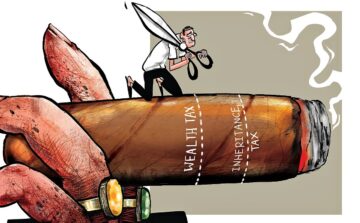 To read the pervasive commentary in the economic sections of the world’s newspapers on what the globalising neoliberal turn in political economy has wrought in the last four decades or so in the Global South, one would think it has all been for the good—their economies have been uniformly growing, as has their middle class, and their poverty has been reduced. In the case of India, there is constant talk of it as poised to become a great economic power in the near future, to say nothing of its prestige on the international canvas as a nuclear power.
To read the pervasive commentary in the economic sections of the world’s newspapers on what the globalising neoliberal turn in political economy has wrought in the last four decades or so in the Global South, one would think it has all been for the good—their economies have been uniformly growing, as has their middle class, and their poverty has been reduced. In the case of India, there is constant talk of it as poised to become a great economic power in the near future, to say nothing of its prestige on the international canvas as a nuclear power.
Yet, serious economic analysis has fundamentally challenged this as, in one crucial respect, downright false. Measurement of poverty in India, by criteria that are sound rather than skewed, points to increased immiseration of the worst-off in numbers as large as ever, despite a swelling middle class.
A puzzle arises then as to why, given this growing immiseration, there has been no explosion of social unrest. A familiar answer points to how populations are deflected from their suffering by the politics of identity, Hindutva politics in India being a conspicuous example. There is, no doubt, some truth in this. But deflections of that sort cannot for long prevent the intolerability of the suffering—especially if it is as extreme as studies have shown it to be—from prompting popular anger and agency. So, the puzzle remains.
In recent years, the influential work of economist Kalyan Sanyal implies a different explanation.
More here.
Enjoying the content on 3QD? Help keep us going by donating now.
A Crack In The Cosmos
Colin Wells at the Dublin Review of Books:
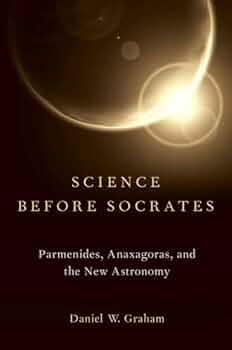 Some time around the year 466 BCE – in the second year of the 78th Olympiad, the Roman naturalist Pliny the Elder tells us – a massive meteor blazed across the sky in broad daylight, crashing to the earth with an enormous explosion near the small Greek town of Aegospotami, or ‘Goat Rivers’, on the European side of the Hellespont in northeastern Greece. Pliny’s younger contemporary, the Greek biographer Plutarch, wrote that the locals still worshipped the scorched brownish metallic boulder, the size of a wagon-load, that was left after the explosion; it remained on display in Pliny and Plutarch’s time, five centuries later.
Some time around the year 466 BCE – in the second year of the 78th Olympiad, the Roman naturalist Pliny the Elder tells us – a massive meteor blazed across the sky in broad daylight, crashing to the earth with an enormous explosion near the small Greek town of Aegospotami, or ‘Goat Rivers’, on the European side of the Hellespont in northeastern Greece. Pliny’s younger contemporary, the Greek biographer Plutarch, wrote that the locals still worshipped the scorched brownish metallic boulder, the size of a wagon-load, that was left after the explosion; it remained on display in Pliny and Plutarch’s time, five centuries later.
Both writers connect the meteorite with the Greek scientist Anaxagoras, who had a widely-known theory that heavenly bodies are made of the same sort of matter found on earth. The amazed Greeks took the stone as spectacular confirmation of this crazy idea, and Anaxagoras’s name would be linked to it forever afterward.
To get a better idea of this meteorite’s figurative impact, consider a parallel from closer to our own time.
more here
Enjoying the content on 3QD? Help keep us going by donating now.
Art And Engineering In The Early Jet Age
Jim Moske at Cabinet Magazine:
 In 1912, an imposing trio of European artists were perusing the Paris Air Show, transfixed by displays of aircraft and flight gear from the early years of human aviation. One of them, painter Fernand Léger, later recalled that his friend Marcel Duchamp voiced an unsettling insight as he pondered the nose of a plane. “It’s all over for painting. Who could better that propeller?” Duchamp then leveled a challenge at sculptor Constantin Brancusi: “Tell me, can you do that?” Brancusi remained undaunted, later declaring, “Now that’s what I call a sculpture! From now on, sculpture must be nothing less than that.” Léger believed the revelatory encounter launched Duchamp on the path to create his first “readymade,” Bicycle Wheel (1913), in which the titular symbol of human-engineered mobility was affixed upside down to a wooden stool.
In 1912, an imposing trio of European artists were perusing the Paris Air Show, transfixed by displays of aircraft and flight gear from the early years of human aviation. One of them, painter Fernand Léger, later recalled that his friend Marcel Duchamp voiced an unsettling insight as he pondered the nose of a plane. “It’s all over for painting. Who could better that propeller?” Duchamp then leveled a challenge at sculptor Constantin Brancusi: “Tell me, can you do that?” Brancusi remained undaunted, later declaring, “Now that’s what I call a sculpture! From now on, sculpture must be nothing less than that.” Léger believed the revelatory encounter launched Duchamp on the path to create his first “readymade,” Bicycle Wheel (1913), in which the titular symbol of human-engineered mobility was affixed upside down to a wooden stool.
This groundbreaking conceptual work, which made a case for the artistic merit of mass-produced commercial objects, would inspire others to explore the aesthetic potential of fabricated industrial forms. Brancusi, perhaps recalling the air show visit, went on to make a flock of sleek Bird in Space sculptures that resembled individual propellor blades.
more here.
Enjoying the content on 3QD? Help keep us going by donating now.
Science is a method, not a worldview
John Milbank in iai:
 The view of reality created by scientism is that of “bits of stuff pushing each other around in a void”. Such a worldview not only flies in the face of contemporary physics, chemistry and biology, and is therefore wholly unscientific, it is also a worldview that is actually based on religion, argues philosopher and Žižek collaborator, John Milbank. To overcome the disenchantment and lack of meaning this worldview creates, Milbank argues we must rediscover the natural magic of the universe and see science as part of a poetic project.
The view of reality created by scientism is that of “bits of stuff pushing each other around in a void”. Such a worldview not only flies in the face of contemporary physics, chemistry and biology, and is therefore wholly unscientific, it is also a worldview that is actually based on religion, argues philosopher and Žižek collaborator, John Milbank. To overcome the disenchantment and lack of meaning this worldview creates, Milbank argues we must rediscover the natural magic of the universe and see science as part of a poetic project.
In the world of today, only science is held to be sacred. It is regarded as the holy guardian of “fact” and all legitimate public imperatives are increasingly supposed to be derived from “fact,” with everything else belonging to a domain of private freedom in which we are free to range within a playground of private and ungrounded preferences.
Of course, the boundary between these two domains is endlessly contested, and increasingly it is also blurred. What we are allowed to do on our own should also refer to established “fact,” as with dieting and exercise and so forth; increasingly, we are being compelled even to live and sleep our individual lives according to “scientific” measure. Conversely, the same measure is vastly expanding the sphere of private choice, providing we stick to the prescribed procedures. This includes an increasing ability and encouragement to alter and enhance our own bodies.
More here.
Enjoying the content on 3QD? Help keep us going by donating now.
Annie Dillard’s Mesmerizing Observations of Nature and Self at the Most Conscious Level
Ellen Vrana in Harper’s Magazine:
 Pilgrim at Tinker Creek contains the kind of writing that emanates from a consciousness Erich Fromm called a “state of being.” This Pulitzer Prize-winning marvel of American writing, Annie Dillard (born April 30, 1945), gives us a spell-binding observation of nature and self at the most immediate, conscious level. “If the day is fine, any walk will do; it all looks good.” Dillard’s body, spirit, and mind go for a walk in Virginia’s old forests. Read more on the pleasures of walking in nature, literally and figuratively, in Thomas A. Clark’s prose poem “In Praise of Walking” and Andy Goldsworthy’s study of walls and their representation of our linear paths. Or jot over to my own compilation of the wonders of walking “The Importance of Walking About”. Dillard’s spirit spills abroad, unhitched to any double awareness that paralyzes the human mind. She exists, walks, sees, and writes.
Pilgrim at Tinker Creek contains the kind of writing that emanates from a consciousness Erich Fromm called a “state of being.” This Pulitzer Prize-winning marvel of American writing, Annie Dillard (born April 30, 1945), gives us a spell-binding observation of nature and self at the most immediate, conscious level. “If the day is fine, any walk will do; it all looks good.” Dillard’s body, spirit, and mind go for a walk in Virginia’s old forests. Read more on the pleasures of walking in nature, literally and figuratively, in Thomas A. Clark’s prose poem “In Praise of Walking” and Andy Goldsworthy’s study of walls and their representation of our linear paths. Or jot over to my own compilation of the wonders of walking “The Importance of Walking About”. Dillard’s spirit spills abroad, unhitched to any double awareness that paralyzes the human mind. She exists, walks, sees, and writes.
The originality of Annie Dillard’s work from 1974 owes to how much she understood that being in nature meant relinquishing our daily self-directed focus to listen and heed acts of grace. “It’s a matter of keeping my eyes open,” writes Dillard. With this intensity and close focus, there is a wonderful celebration of the small and the individual. Insects, as they go about their complex familiar lives, can easily require hours of observation. Read more in Gerald Durrell’s tales of childhood nature adventures. Dillard reminds us “If I can’t see these minutiae, I still try to keep my eyes open.”
The mockingbird took a single step into the air and dropped. His wings were still folded against his sides as though he were singing from a limb and not falling, accelerating thirty-two feet per second per second, through the empty air. Just a breath before he would have been dashed to the ground, he unfurled his wings with exact, deliberate care, revealing the broad bars of white.
I had just rounded a corner when his insouciant step caught my eye; no one else was in sight. The fact of his free fall was like the old philosophical conundrum about the tree that falls in the forest. The answer must be, I think, that beauty and grace are performed whether or not we will or sense them. The least we can do is try to be there.
More here.
Enjoying the content on 3QD? Help keep us going by donating now.
Sunday, August 17, 2025
The Many Lives of James Baldwin
John Livesey in Jacobin:
James Baldwin has become the literary pinup of a generation. In 2025, he is everywhere: his most famous quotations stamped on viral infographics while his face is sold on mugs, t-shirts, and tote bags. The Fire Next Time has become a bestseller on both sides of the Atlantic, redesignated as a how-to guide for dismantling structural racism. Perhaps unsurprisingly, Baldwin has even reached TikTok, where five million videos are currently tagged under his name.
We can trace the arc of this resurgent popularity back to 2014. On August 9 of that year, Michael Brown — an unarmed black teenager — was shot and killed by white police officers in Ferguson, Missouri. The following day, Ferguson was flooded by demonstrators, and over the course of two weeks, thousands more protesters from across the country would take to the streets, inaugurating the largest social-justice movement of the twenty-first century, Black Lives Matter.
It was during this period of unrest that many of Baldwin’s most iconic quotations first started to recirculate on social media, frequently attached to the hashtag #BLM. The author’s frank analysis of American racism resonated with protesters, and the aphoristic qualities of his prose — perfected during his days as a child preacher — proved ideally suited to a the new era of digital activism, distilling complex ideas into a number of memorable slogans under the essential 140 character limit.
Buoyed by this initial spike in interest, Baldwin’s profile has only continued to grow in the decade since. In 2016, Raoul Peck’s wildly successful documentary I Am Not Your Negro used Baldwin’s unpublished work to retell the history of the civil rights era, while a year later Barry Jenkins adaptation of If Beale Street Could Talk was met with similar acclaim. Almost all of Baldwin’s books have now been reissued and translated into over thirty languages. Neglected for over thirty years, Baldwin is now hard to avoid.
More here.
Enjoying the content on 3QD? Help keep us going by donating now.
Whose Fed?
Brett Christophers in The New York Review of Books:
For the past twenty years, central banks have rarely been out of the news. Called upon to stabilize the global financial system when it appeared at risk of collapse during the financial crisis of 2008–2009, the Federal Reserve and its international peers remained in firefighting mode until the mid-2010s, using all the weapons in their arsenal to stimulate economic activity. After a brief respite, the world’s central banks returned to the fore during the coronavirus pandemic of 2020–2021, again being relied on to keep credit flowing and the economy off life support. And no sooner had the virus begun to loosen its grip than central banks were forced to contend with the resurgence of a phenomenon that many commentators appeared to think had been consigned to history, at least in the rich global north: inflation. A surge in retail prices from mid 2021 saw the Fed and other central banks hike interest rates to levels higher than they had been since before the financial crisis. There, more or less, they remain today.
It’s against this backdrop that Donald Trump returned to the White House in January. Nothing if not sensitive to the flow of the American economy, Trump has been keen for the Fed to aggressively lower interest rates now that inflation has eased. As he sees it, this would help sustain the economy’s steady expansion over the past two years, which has arguably been jeopardized by the tariffs that he himself introduced. But thus far the Fed has refused to play ball: it has held rates steady during 2025, having begun cautiously to reduce them last year.
More here.
Enjoying the content on 3QD? Help keep us going by donating now.
Beyond Neoliberalism?
Kate Mackenzie and Tim Sahay in Polycrisis:
The globalization that defined the neoliberal period was imagined at a remove from the material world: weightless supply chains composed of transparent logistics networks, just-in-time production and delivery amounting to a seamless world of efficiency and complexity. Neoliberalism’s crisis of legitimacy began with the financial crisis in 2008, but the sudden re-entry of physical problems introduced by the Covid-19 shock—what we called the “geopolitics of stuff” back in 2022—solidified the rebuke.
Emblematic of the shift was President Joe Biden’s use of a Korean War-era authority—the Defense Production Act (DPA)—to airlift twenty-seven million tins of goat milk-based baby formula from Australia to the US, to fill a supply gap caused by the shuttering of a Michigan factory caused by the shuttering of a Michigan factory operated by operated by Abbott Nutrition. (The company, which shut the plantplant after its product was linked to two contamination-related deaths, had just increased its dividend to shareholders and announced a $5 billion share buyback program.) After being deployed to meet the nutritional needs of US newborns, the DPA was subsequently used to provide financing support for mining and processing of critical minerals from Australia, Canada, and the United States. From baby formula to mining supply chains, the state was back.
Neoliberalism’s demise has been well and widely proclaimed. Where market shaping policies were once dismissed with epithets like interventionism and “picking winners,” policy makers now talk openly about disciplining capital and industrial policy.
More here.
Enjoying the content on 3QD? Help keep us going by donating now.
Rebuilding the Kingdom
Colin Powers in Phenomenal World:
Saudi Arabia’s Crown Prince Mohammed bin Salman first announced Saudi Vision 2030 (SV2030), an economic diversification-cum-social reform plan, during an interview with Al Arabiya in April 2016. SV2030 vowed to transform Saudi Arabia, proposing fantastical ventures into the future while aggressively deploying capital abroad and opening the domestic economy up via debt issuance, investment code reform, contracting, and capital market reform. Knock-on effects for the world economy were imminent.
Facing volatility in the commodities market and growing financial vulnerabilities, the oil-dependent nation has since embarked on an effort to remake itself as a global economic powerhouse. Alongside ever expanding flows of crude to the east and deepening investment ties with China, Saudi Arabia’s moves on the home front looked primed to tilt the axis of global capital accumulation. The nine years since SV2030’s announcement have seen gains across a number of domains. The country has already cleared original targets for female labor-force participation and tourism. It is also likely to meet its goals in the capital markets. Courtesy of Aramco’s limited IPO, the Saudi Exchange now ranks as the ninth largest stock market in the world by market capitalization and the third largest among emerging markets.
SV2030 has also prompted an enormous wave of construction in its bid to reshape the country’s built environment. Despite its population of just 30 million, Saudi Arabia is poised to host the largest construction market in the world by 2028. Neom—the giga-project being conjured out in the western province of Tabuk along the northern shores of the Red Sea—is alone absorbing 20 percent of the global steel supply.
More here.
Enjoying the content on 3QD? Help keep us going by donating now.
Sunday Poem
“My Son, my Executioner”
And start to die together.
by Donald Hall
Enjoying the content on 3QD? Help keep us going by donating now.
AI’s cognitive implications: the decline of our thinking skills?
Raquel Loga in ie University:
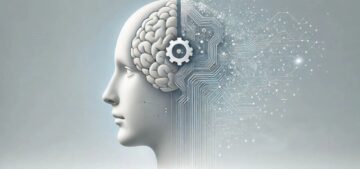 Artificial intelligence (AI) has become an integral part of daily life, streamlining everything from search queries to complex decision-making. While AI tools offer convenience and efficiency, they also raise concerns about cognitive offloading—the process of delegating cognitive tasks to external aids. As reliance on AI grows, experts warn that it could diminish critical-thinking skills and alter fundamental cognitive processes. It is not about avoiding its use entirely; the incorporation of AI is essential for the advancement of our societies. (In fact, as will be seen later, it has been shown that a moderate use of AI can have a positive cognitive impact.) However, it is advisable to learn how to use it properly and in a balanced manner. These concerns were central to discussions at the AI for Humanity: Innovating for a Sustainable Digital Future session, led by Iliana Grosse-Buening, during the second edition of the Responsible Tech Salon. This event was co-organized by the IE Center for Health and Well-being, led by Lisa Bevill, and the UNESCO Chair in AI Ethics and Governance at IE School of Humanities, led by Ted Lechterman.
Artificial intelligence (AI) has become an integral part of daily life, streamlining everything from search queries to complex decision-making. While AI tools offer convenience and efficiency, they also raise concerns about cognitive offloading—the process of delegating cognitive tasks to external aids. As reliance on AI grows, experts warn that it could diminish critical-thinking skills and alter fundamental cognitive processes. It is not about avoiding its use entirely; the incorporation of AI is essential for the advancement of our societies. (In fact, as will be seen later, it has been shown that a moderate use of AI can have a positive cognitive impact.) However, it is advisable to learn how to use it properly and in a balanced manner. These concerns were central to discussions at the AI for Humanity: Innovating for a Sustainable Digital Future session, led by Iliana Grosse-Buening, during the second edition of the Responsible Tech Salon. This event was co-organized by the IE Center for Health and Well-being, led by Lisa Bevill, and the UNESCO Chair in AI Ethics and Governance at IE School of Humanities, led by Ted Lechterman.
AI and cognitive offloading
AI tools, from smart assistants to predictive algorithms, have transformed how people process information. The ease of accessing instant solutions has led to cognitive offloading, where individuals shift memory and problem-solving tasks to technology (Nosta, 2025).
More here.
Enjoying the content on 3QD? Help keep us going by donating now.
‘South Park’ and ‘King of the Hill’ take on the Trump era
Chris Klimek in The Washington Post:
Setting a template that Parker and Stone would follow, Judge spun a couple of experimental animated shorts into a spiky comedy series that seemed, by the more decorous standards of the era, bracing in its vulgarity — and sometimes, trenchant in its commentary. By the time “South Park” came along, Judge had already created a second, more ambitious animated series, the sitcom “King of the Hill,” a send-up of life in a fictional suburb of the Dallas-Fort Worth metroplex. Judge voiced the title role of propane salesman Hank Hill, giving the character and the series a tenor that was always more affectionate than mocking. The show’s initial 13-season run concluded in 2009. After a 15-year hiatus, the show’s 14th season premiered on Hulu this month.
More here.
Enjoying the content on 3QD? Help keep us going by donating now.
Friday, August 15, 2025
The Worm Hunters of Southern Ontario
Inori Roy in The Local:
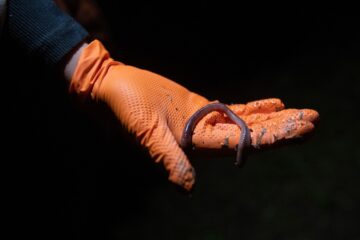 If you’re in the market for fishing bait anywhere in North America, and now even in parts of western Europe, odds are you’re buying a Canadian nightcrawler plucked from this stretch of land between Toronto and Windsor. These wild Canadian worms, who live so far beneath the surface of the soil that breeding or farming them is impractical, are hand-picked by a small army of workers, almost all immigrants from Southeast Asia, including generations of Vietnamese refugees and, more recently, temporary foreign workers from Thailand and Laos. It’s a niche sector of the western economy that’s exclusively sourced from this small corner of the province, and run primarily by family businesses passed from one generation to the next. In a given year, the more than $200 million industry sells between 500 and 700 million worms. But with changing demand, immigration labour policies, and the climate crisis, it’s also at an existential crossroads.
If you’re in the market for fishing bait anywhere in North America, and now even in parts of western Europe, odds are you’re buying a Canadian nightcrawler plucked from this stretch of land between Toronto and Windsor. These wild Canadian worms, who live so far beneath the surface of the soil that breeding or farming them is impractical, are hand-picked by a small army of workers, almost all immigrants from Southeast Asia, including generations of Vietnamese refugees and, more recently, temporary foreign workers from Thailand and Laos. It’s a niche sector of the western economy that’s exclusively sourced from this small corner of the province, and run primarily by family businesses passed from one generation to the next. In a given year, the more than $200 million industry sells between 500 and 700 million worms. But with changing demand, immigration labour policies, and the climate crisis, it’s also at an existential crossroads.
More here.
Enjoying the content on 3QD? Help keep us going by donating now.
Spiderweb silks and architectures reveal millions of years of evolutionary ingenuity
Ella Kellner in The Conversation:
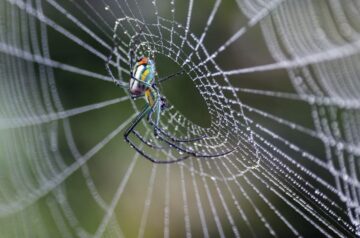 As a materials scientist who studies spiders and their silks, I am curious about the relationship between spiderweb architecture and the strength of the silks spiders use. How do the design of a web and the properties of the silk used affect a spider’s ability to catch its next meal?
As a materials scientist who studies spiders and their silks, I am curious about the relationship between spiderweb architecture and the strength of the silks spiders use. How do the design of a web and the properties of the silk used affect a spider’s ability to catch its next meal?
Spider silk has a long evolutionary history. Researchers believe that it first evolved around 400 million years ago. These ancestral spiders used silk to line their burrows, protect their vulnerable eggs and create sensory paths and guidelines as they navigated their environment.
To understand what ancient spiderwebs could have looked like, scientists look to the lampshade spider. This spider lives in rock outcroppings in the Appalachian and Rocky mountains. It is a living relative of some of the most ancient spiders to ever make webs, and it hasn’t changed much at all since web-building first evolved.
More here.
Enjoying the content on 3QD? Help keep us going by donating now.
Alibaba Cloud Founder and Zhejiang Lab Director Wang Jian speaks about China’s AI future
Enjoying the content on 3QD? Help keep us going by donating now.
Anas al-Sharif delivered what Edward Said expected from intellectuals
Jennifer Zacharia in the Boston Review:
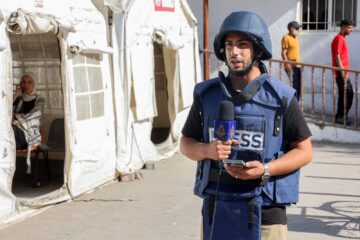 In a recent series of videos, Avichay Adraee, the Arabic-language spokesperson for the Israeli military, relentlessly attacked Anas al-Sharif, an Al Jazeera correspondent in northern Gaza. On July 20, while reporting on a particularly harrowing scene from the courtyard of al-Shifa Hospital, al-Sharif broke down emotionally when an emaciated woman collapsed from hunger beside him, as an ambulance arrived carrying some of the dozens of people killed by Israeli soldiers that day while waiting for bags of flour. Adraee accused him of shedding “crocodile tears.” When al-Sharif called for a ceasefire, Adraee called him a “mouthpiece of intellectual terrorism.”
In a recent series of videos, Avichay Adraee, the Arabic-language spokesperson for the Israeli military, relentlessly attacked Anas al-Sharif, an Al Jazeera correspondent in northern Gaza. On July 20, while reporting on a particularly harrowing scene from the courtyard of al-Shifa Hospital, al-Sharif broke down emotionally when an emaciated woman collapsed from hunger beside him, as an ambulance arrived carrying some of the dozens of people killed by Israeli soldiers that day while waiting for bags of flour. Adraee accused him of shedding “crocodile tears.” When al-Sharif called for a ceasefire, Adraee called him a “mouthpiece of intellectual terrorism.”
To nearly all who watched him, al-Sharif’s reporting has been nothing short of heroic and awe-inspiring. But to the Israeli government, he is culpable for having the audacity to document the starvation campaign it has engineered and imposed by brute force.
More here.
Enjoying the content on 3QD? Help keep us going by donating now.
The “Mummy Portraits” of Roman Egypt
Enjoying the content on 3QD? Help keep us going by donating now.
The Lonely Neighborhood
Joseph Lawler at the New Atlantis:
 Americans are living ever more isolated lives. We get married later, start families later, have fewer children, and report more loneliness than ever before. Everyone suspects that new technology has something to do with this. But what if we’re also suffering from the failure of a very old technology?
Americans are living ever more isolated lives. We get married later, start families later, have fewer children, and report more loneliness than ever before. Everyone suspects that new technology has something to do with this. But what if we’re also suffering from the failure of a very old technology?
Somehow it has become astonishingly expensive to buy a house in the United States. The median house sale price is now $417,000. Fifty years ago, in today’s dollars, it was $232,000. And the young are getting priced out: In 1981, the median first-time homebuyer was 29 years old. Today he or she is 38.
In this new essay series, originally reported by Joseph Lawler, we will explore how the U.S. housing market suffers from a series of distortions created by misguided government policies.
The series will address why we keep building single-family-housing suburbs when most people report that they would prefer to live in lively neighborhoods with retail, churches, restaurants, cafes, and other third spaces.
more here.
Enjoying the content on 3QD? Help keep us going by donating now.
Why Love Matters Most
Cathy Mason at Aeon Magazine:
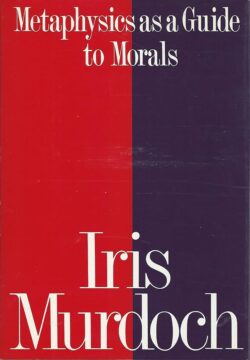 To see how Murdoch ends up thinking that love is central to morality, it is first worth asking a broader question: what is morality? Murdoch’s answer is that at the core of our moral life is the way we see the world, our ‘vision’ of it. We are always looking at something, in some manner, and in doing so we either build up a fairer, more just, more adequate picture of it, or we distort our vision of it. This is a continuous part of our lives.
To see how Murdoch ends up thinking that love is central to morality, it is first worth asking a broader question: what is morality? Murdoch’s answer is that at the core of our moral life is the way we see the world, our ‘vision’ of it. We are always looking at something, in some manner, and in doing so we either build up a fairer, more just, more adequate picture of it, or we distort our vision of it. This is a continuous part of our lives.
Our vision, she thinks, largely determines how we go on to act: if I see you as my enemy, there will be no surprise when I start treating you like my enemy. If I had instead seen you as a potential friend, then I would naturally treat you with warmth and care. Acting rightly matters, she thinks, but how we act depends on how we see, principally on how we see other people.
Correspondingly, she sees the key moral activity not as choice but as attention – an idea she gets from the activist, mystic and philosopher Simone Weil. On Murdoch’s picture, our most basic moral activities are activities of attending to particular things in particular ways, since this is the activity that shapes our vision of the world.
more here.
Enjoying the content on 3QD? Help keep us going by donating now.

 Call it “A Tale of Two Satirists.”
Call it “A Tale of Two Satirists.”